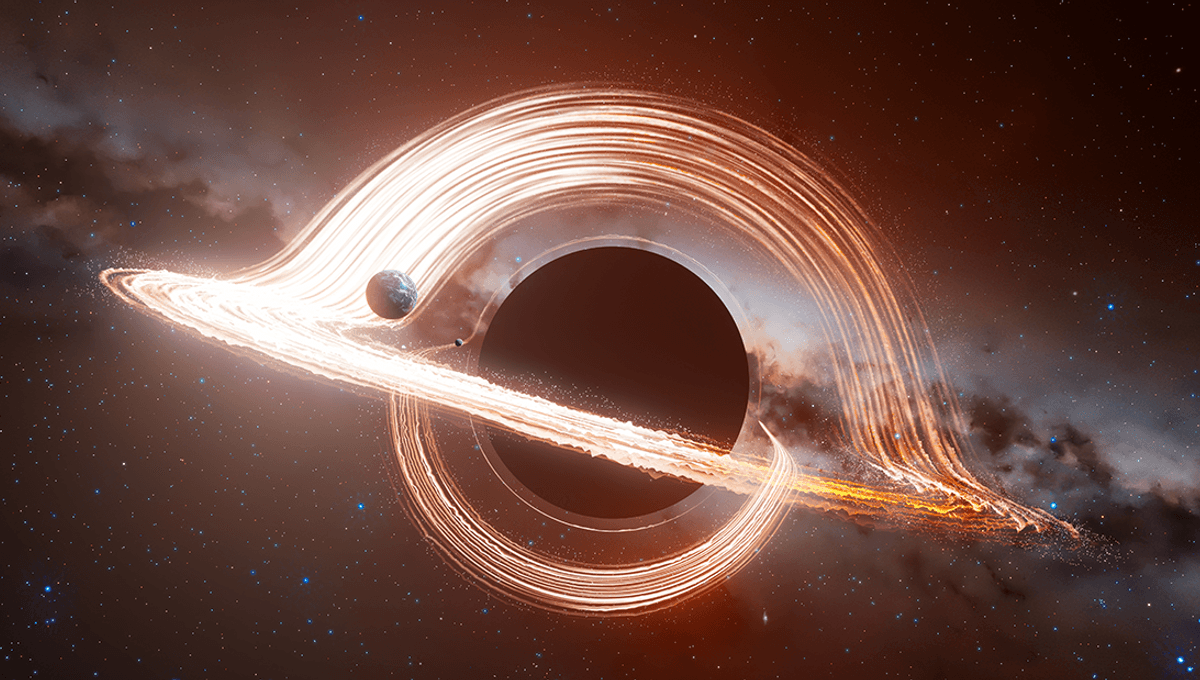
If we one day want to explore the galaxy (let alone the rest of the universe) we have a speed issue. In late 2023, NASA’s Parker Solar Probe achieved the highest speed ever achieved by a human-made object, clocking in at 635,266 kilometers (394,736 miles) per hour.
While impressive, that’s only 0.059 percent of the speed of light. Visiting our closest neighbor Proxima Centauri, 4.2 light-years away, at these speeds would take around 7,700 years, making generational ships (or robotic probes) necessary to explore it or any other interesting star further away.
To achieve these speeds, and in other missions to visit objects in the furthest reaches of the Solar System, NASA has regularly employed “gravity assists”. As spacecraft approach a large body (planets or a star), momentum is transferred from the planet to the craft, slowing the orbit of the object a tiny amount in exchange for a significant increase in velocity. In essence, you steal a bit of kinetic energy from the planet or star.
“Several robotic spacecraft have used the ‘gravity assist’ technique to achieve their targets ‘high up’ in the Sun’s gravity well. Voyager 2 launched in August 1977 and flew by Jupiter for reconnaissance, and for a trajectory boost to Saturn,” NASA explains.
“Voyager 1 launched the following month and did the same (reaching Jupiter before Voyager 2 did). Voyager 2 then obtained an assist from Saturn and another one later from Uranus, climbing all the way to Neptune and beyond. Galileo took one kick from Venus and two from Earth, while orbiting the Sun en route to its destination, Jupiter. Cassini took two boosts from Venus, one from Earth, and another from Jupiter to gain enough momentum to reach Saturn.”
It has been proposed that we could send ships to relativistic speeds by using a gravity assist around a neutron star in a compact binary system. Such a mission would be pretty dangerous, however, and in 2019 David Kipping, assistant professor of astronomy at Columbia University, suggested another way we could use this neat trick safely by instead firing protons around a black hole.
Black holes are a source of a lot of gravity for an assist, forming from massive stars (or possibly through direct collapse) that have collapsed under their enormous mass, not even allowing light to escape. But trying to fly a spacecraft around one is the behavior of someone who wants to become spaghetti.
But as light passes through gravitational wells we know that it too gains energy. As light is traveling at the speed limit of the universe – the speed at which all particles without mass must travel – it cannot gain or lose speed from falling into or out of a gravity well. Instead, as light falls into a gravity well its frequency becomes higher and is blue-shifted, while light coming out of a gravity well becomes red-shifted. It is this that is exploited by the “Halo Drive”.
The basic idea is that you send a beam of light around a pair of black holes spinning around each other prior to a merger, or a single black hole spinning quickly, and use the higher-energy blue-shifted light to accelerate your spacecraft.
“Using a moving black hole as a gravitational mirror, kinetic energy from the black hole is transferred to the beam of light as a blueshift and upon return the recycled photons not only accelerate, but also add energy to, the spacecraft,” Kipping writes in the paper. “It is shown here that this gained energy can be later expended to reach a terminal velocity of approximately 133% the velocity of the black hole.”
As the light goes around the black hole it would form a halo, giving the drive its name.
“The proposed system is that a spacecraft emits a collimated beam of energy towards at a black hole at a carefully selected angle, such that the beam returns to the spacecraft – a so-called boomerang geodesic,” Kipping continued. “If the black hole is moving towards the spacecraft, as could be easily accomplished by exploiting a compact binary, this halo of particles will return with a higher energy (and momentum). This energy is then transferred to the spacecraft allowing for acceleration. Overall then, the halo drive transfers kinetic energy from the moving black hole to the spacecraft by way of a gravitational assist.”
Using the drive, an interstellar civilization could hop between black hole binaries for no fuel, using them to decelerate as they approach. According to the paper, the mass of the spacecraft is fairly unimportant as long as it is much lower than that of the black hole system, meaning that it could propel ships the size of Jupiter up to relativistic speeds.
Using a halo drive would only have minimal detectable effects on binary black holes, as using them to decelerate would effectively undo the effect of using them to accelerate (thank you, Newton’s third law).
“However, finite time differences between the departure and arrival would cause the binary to spend time at a tighter semi-major axis than it would naturally, during which time it would experience more rapid gravitational radiation in-spiral,” Kipping added. “Accordingly, a possible technosignature of the halo drive would be an enhanced rate of black hole binary in-spiral, versus say their neutron star counterparts.”
The study is published by the British Interplanetary Society and is available on arXiv.
Source Link: "Halo Drive" Could Achieve Relativistic Speeds By Firing Light Around A Black Hole